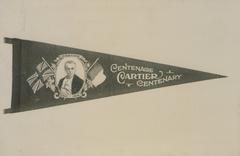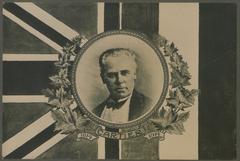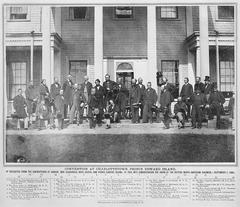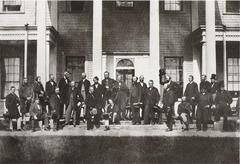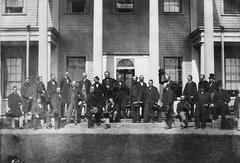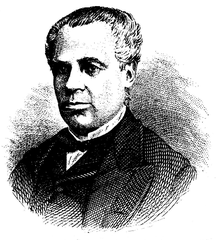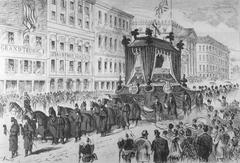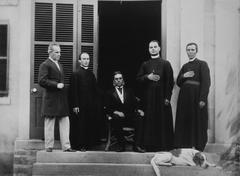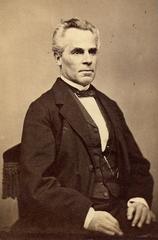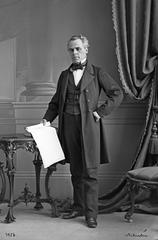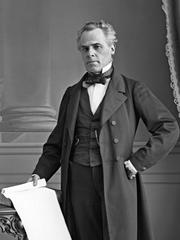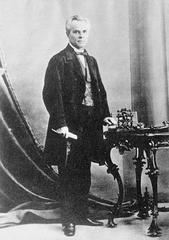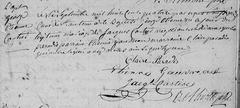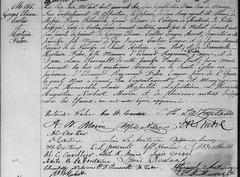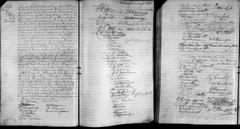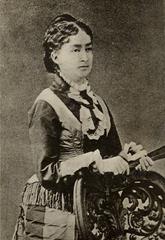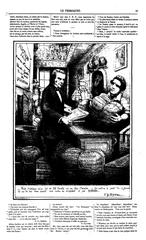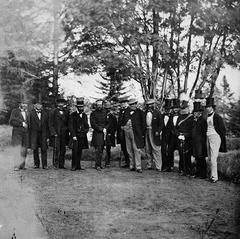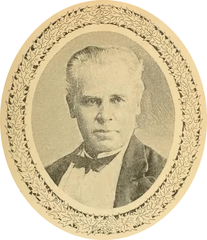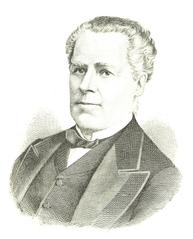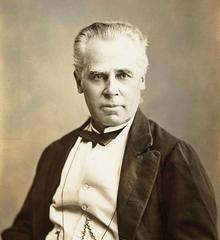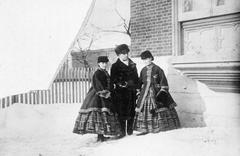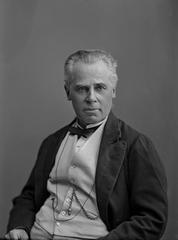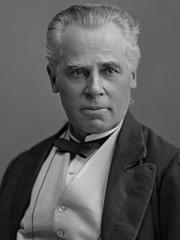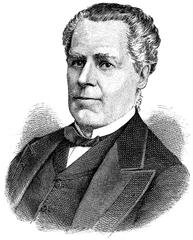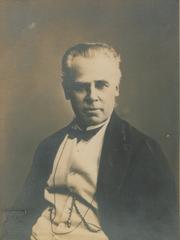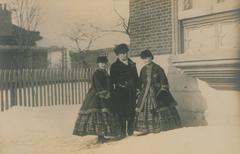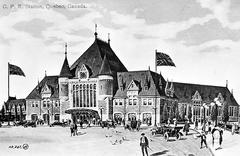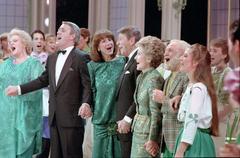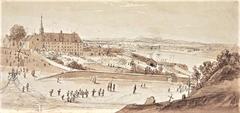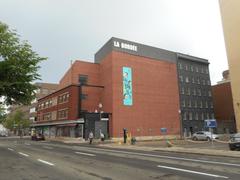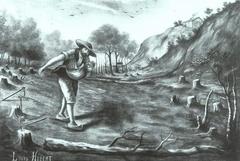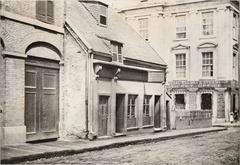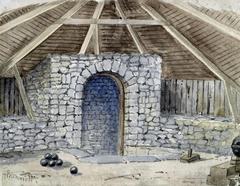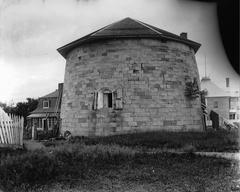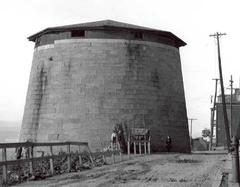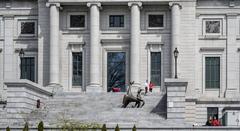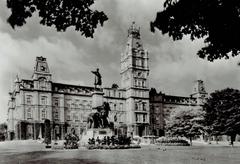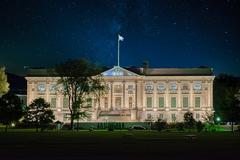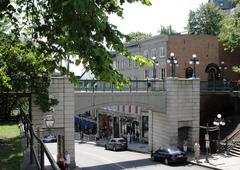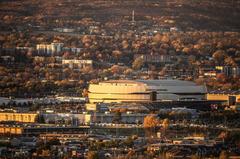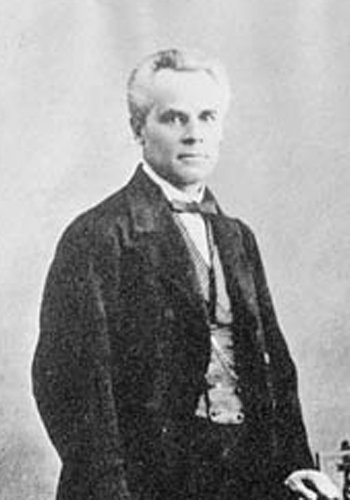
George-Étienne Cartier Monument Quebec City: Visiting Hours, Tickets, and Travel Guide
Date: 14/06/2025
Introduction
The George-Étienne Cartier Monument, nestled in the historic Parc Montmorency of Quebec City, stands as a distinguished tribute to one of Canada’s most influential Fathers of Confederation. This monument is not just a work of art—it is a powerful symbol reflecting Cartier’s pivotal role in shaping Canada’s political landscape, his advocacy for French-Canadian rights, and his vision for a unified nation. With its strategic location overlooking Old Quebec and the St. Lawrence River, the monument offers visitors both a profound historical journey and breathtaking panoramic views.
This detailed guide will equip you with everything you need to know about visiting the George-Étienne Cartier Monument: historical context, cultural significance, visitor information, accessibility, travel tips, and nearby attractions. Whether you are a history enthusiast or a traveler seeking meaningful experiences, this article will help you make the most of your visit to one of Quebec City’s essential heritage sites.
For additional details, consult official sources such as Ville de Québec’s Parc Montmorency page, Québec Cité, and Parks Canada.
Table of Contents
- Introduction
- Historical Background
- Monument Description and Symbolism
- Artistic and Historical Context
- Visiting Information
- Nearby Attractions
- Visitor Experience
- Cartier’s Legacy: Significance and Cultural Impact
- Frequently Asked Questions (FAQ)
- Summary and Recommendations
- Sources and Further Reading
Historical Background
Early Settlement and Colonial Foundations
Parc Montmorency, where the George-Étienne Cartier Monument is situated, traces its origins to the dawn of French settlement in North America. In 1617, Louis Hébert and Marie Rollet established New France’s first farm on this land, cultivating crops and laying the foundation for Quebec’s agrarian legacy. Their story underscores the park’s deep historical roots, predating the monument by centuries (Ville de Québec).
The Political Heart of Pre-Confederation Canada
Parc Montmorency later emerged as a political epicenter, housing the Parliament of the United Province of Canada between 1849 and 1867. This site witnessed the drafting of the British North America Act in 1864—legislation central to the founding of modern Canada. The park’s legacy as a crucible of political debate and nation-building adds further gravitas to the Cartier monument (Québec Cité).
George-Étienne Cartier: Architect of Confederation
Born in 1814, George-Étienne Cartier’s political journey spanned from revolutionary activism to a leadership role in Canadian Confederation. As a co-premier of the Province of Canada and a major participant in the Charlottetown and Quebec Conferences, Cartier was instrumental in uniting French- and English-speaking populations and negotiating the framework that became the Constitution Act of 1867 (Parks Canada). His advocacy for French-Canadian rights and his vision for a bilingual, bicultural nation remain cornerstones of his enduring legacy.
Monument Description and Symbolism
Physical Description
The George-Étienne Cartier Monument, installed in 1920, is a bronze replica of George William Hill’s original 1919 Montreal statue. The Quebec City monument stands 3.68 meters tall atop a granite pedestal, commanding attention in Parc Montmorency’s landscaped surroundings (Ville de Québec - Art Public). Cartier is depicted in formal parliamentary attire, with an upright posture and authoritative expression—embodying his statesmanlike qualities.
Symbolic Elements
A defining feature of the monument is the inscription on its pedestal:
« Franc et sans dol » (“Frank and without deceit”)—Cartier’s personal motto, reflecting his commitment to honesty and public service. The statue’s pose and attire underline his parliamentary achievements and his vision for a united but diverse Canada.
Artistic and Historical Context
The monument is both an artistic achievement and a historical marker. Sculptor George William Hill’s work is celebrated for its realism and idealism, capturing Cartier’s likeness while elevating him as a national icon. Placing the monument in Parc Montmorency—once a seat of government and a cradle of Confederation—amplifies its symbolic resonance, linking Cartier’s legacy to the park’s political and historical heritage.
Visiting Information
Hours and Accessibility
- Hours: Parc Montmorency is open year-round, 24/7. The George-Étienne Cartier Monument is accessible at all times (Ville de Québec).
- Admission: Free—no tickets required.
- Accessibility: The park features paved, wheelchair-accessible paths and benches. Bilingual interpretive panels offer historical background.
Getting There
- On Foot: Located at the eastern edge of Old Quebec, Parc Montmorency is within walking distance of major landmarks such as Château Frontenac, Dufferin Boardwalk, and the Citadelle.
- Public Transit: Old Quebec is served by several RTC bus lines, with stops close to Parc Montmorency. The Gare du Palais train and bus station is about a 15-minute walk away.
- Car: Paid parking is available at Place d’Youville and Dalhousie lots; street parking is limited.
- Bicycle: Bike racks are located near the park (Quebec Wonders).
Travel Tips
- Best Times to Visit: Spring to autumn for pleasant weather and scenic park views. Early mornings and late afternoons offer optimal lighting and fewer crowds.
- Facilities: While benches and interpretive panels are available, restrooms are not provided in the park itself—use nearby attractions for facilities.
- Weather: Dress appropriately for the season; winter visits may require caution due to ice.
Nearby Attractions
Enhance your visit by exploring these notable sites within walking distance:
- Louis Hébert Monument: Also in Parc Montmorency, commemorating Quebec’s first settler-farmer.
- Old Quebec: A UNESCO World Heritage Site with historic architecture, shops, and cafes.
- Dufferin Terrace: Scenic boardwalk with views of the Château Frontenac and the St. Lawrence River.
- Citadelle and Plains of Abraham: Key sites in Canadian military and colonial history.
- Place Royale and Fortifications of Quebec: Immersive experiences into the city’s storied past.
Visitor Experience
The George-Étienne Cartier Monument is ideal for quiet reflection, photography, and learning about Canada’s political evolution. Interpretive signage provides context, and the tranquil park setting invites visitors to contemplate Cartier’s legacy and the broader narrative of Canadian unity and diversity.
- Photography: Capture the monument with the city or river as backdrop. Golden hour offers the best lighting.
- Guided Tours: Many walking tours of Old Quebec include stops at Parc Montmorency and the Cartier Monument, providing expert commentary (Quebec Wonders).
Cartier’s Legacy: Significance and Cultural Impact
Role in Confederation
Cartier was vital in uniting French and English Canada, ensuring the new Dominion respected both linguistic groups’ interests (cdnhistorybits.wordpress.com). His leadership at key conferences and his legal expertise shaped the framework of modern Canada.
Champion of French-Canadian Rights
He advocated for the preservation of French language, Catholic education, and the Civil Code in Quebec, defending minority rights within the new federation (aviewoncities.com).
Public Memory and Monuments
The monument in Quebec City, along with the grand memorial in Montreal’s Mount Royal Park, embodies Cartier’s revered status. Inscriptions such as “Franc et sans dol” and “Avant tout soyons canadiens” (“Above All, be Canadian”) capture his ideals (grandquebec.com).
Urban and Cultural Development
Cartier’s influence extended to the economic and infrastructural modernization of Montreal and Quebec, supporting engineering and urban planning efforts that shaped the contemporary city (parks.canada.ca).
Ongoing Legacy
Cartier’s legacy is complex—celebrated as a unifier and sometimes critiqued for his political compromises. Nonetheless, his vision for a bilingual, inclusive Canada persists as a central theme in national identity debates.
Frequently Asked Questions (FAQ)
Q: What are the visiting hours for the George-Étienne Cartier Monument?
A: Parc Montmorency is open 24/7, and the monument is accessible year-round with free admission.
Q: Is the site wheelchair accessible?
A: Yes, paved paths and benches make the park accessible for all visitors.
Q: Are guided tours available?
A: Many Quebec City walking tours include the monument, offering expert historical context.
Q: Are restrooms available?
A: No public restrooms are in the park; use facilities at nearby museums or restaurants.
Q: When is the best time to visit?
A: Spring through fall, especially early mornings or late afternoons for optimal lighting and tranquility.
Summary and Final Recommendations
The George-Étienne Cartier Monument in Quebec City is a must-visit for those interested in Canadian history, art, and culture. Its setting in Parc Montmorency provides not only a picturesque retreat but also a meaningful connection to the events and individuals that shaped Canada. The monument’s free, year-round accessibility makes it easy to include in any Quebec City itinerary, and its proximity to other major sites ensures a rich, comprehensive visitor experience.
For enhanced learning, utilize the park’s interpretive signage or join a guided tour. To extend your historical exploration, visit the nearby Old Quebec district, Citadelle, and Plains of Abraham. Download the Audiala app for interactive guides and stay updated on local events.
Sources and Further Reading
- Ville de Québec - Parc Montmorency
- Québec Cité - Parc Montmorency
- Parks Canada - George-Étienne Cartier National Historic Site
- Ville de Québec - George-Étienne Cartier Monument Art Public
- cdnhistorybits.wordpress.com - John A. Macdonald and George-Étienne Cartier
- grandquebec.com - Monument George-Étienne Cartier
- Quebec Wonders - Landmarks Quebec City Attractions
- aviewoncities.com - George-Étienne Cartier Monument

